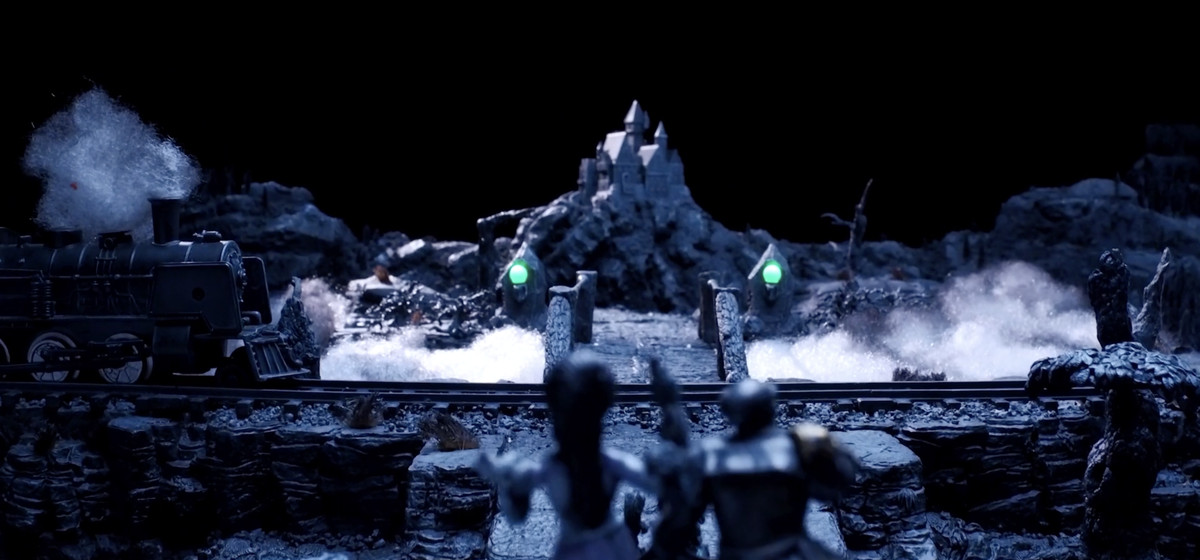Dimension 20’s Coffin Run is a nearly flawless Dracula adaptation
Stories, especially beloved stories, have a tendency to bleed beyond their limits and escape their original body. Bram Stoker Dracula is one of many beloved works that have long since taken on new forms and are constantly changing shape. The epistolary tale of vampires has hundreds and hundreds of adaptations, with one dominant thread: Stoker’s enduring characterization of the elegant, verbose, vampiric Count himself.
Given the breadth and diversity of the landscape, it may be difficult to elaborate further at this point Dracula in a way that feels fresh – and that’s why Dimension 20’s Coffin running was and remains a pleasure.
Coffin runninga Dungeons & Dragons series, which premiered in the summer of 2022. The six-episode series, described on Dropout’s website as “a story as old as many lifetimes”, was helmed by storyteller and game master Jasmine Bhullar and starred Zac Oyama, Erika Ishii, Isabella Roland and Carlos Luna. Coffin running came from Bhullar’s love for Stoker’s novel, she said CBR in 2022, as well as comedic source material such as Young Frankenstein And What we do in the shadows.
The series’ cast stars as archetypal members of Dracula’s entourage, brought together to bring the Count (who suffers undeath-threatening injuries at the series’ apex) home to Castle Dracula in his coffin. Oyama plays Squing, a Nosferatu-like vampire who is Dracula’s “firstborn,” transformed as a child and preserved forever. Roland plays Dr. Aleksandr Astrovsky, a brash, energetic mad scientist character. Luna plays Wetzel, a young human who lives as Dracula’s plaything in the hopes of becoming a vampire herself. And Ishii plays May Wong, one of Dracula’s vampire brides, who was an actress in New York.
Image: Outage
Coffin running unfolds like a love letter to Dracula, both the form of the novel and the vampire itself. The story roots itself in Stoker’s work from the start and anchors the story in the epistolary form. They’re actually letters altogether (and not just in Squing, which tends to eat them). The series begins with Dracula himself standing over a desk and writing a letter to Squing. The letter travels across the sea before arriving at the Gold Crona Inn – just like Jonathan Harker at the beginning of Dracula. From there, letters accompany the story, arriving at key moments for the players.
Letters, as a kind of narrative delivery system, are used adeptly by Bhullar. Due to the capricious nature of their author, Dracula, when genuine feelings are poured out in the letters, a persistent sense of unease arises, which is perpetuated by the arrival of letters that reveal the Count’s feelings for his friends and family who carrying the coffin may not be what they seem. For example, Wetzel becomes disillusioned with the Count as the series progresses and slowly begins to distrust him, while May realizes that her own adoration for Dracula may be more one-sided.
Equipment, Coffin running is a beautiful tribute to the Gothic opulence of Dracula. When players are handed letters, they receive real letters at the table, along with a glowing candlestick. In the final battle, Dracula’s vitality is measured by vials of ‘blood’ poured into a crystal cup by Bhullar and then consumed as the vampire returns to himself. Black and white film adaptations get a nod in the grayscale thumbnails and monochromatic set. The special effects all come together to create a world that feels incredibly familiar to horror fans, but also uniquely new. Rick Perry, production designer and creative producer for Dropout, has received critical acclaim for his work on the sets and miniatures throughout the series. as do the crew in a post-series talkback episode.

Image: Outage
From the Scooby-Doo-esque title sequence to the performances, crew and cast Coffin running perfectly matching the comedic influences Bhullar brought to the series, as well as the inherent irony of the source material. May, the classically beautiful vampire bride, is played by Ishii with a cheerful, exaggerated accent, just like Dr. Astrovsky by Roland. Squing, as Dracula’s firstborn, is constantly baffled by modern technology, referring to the train that delivers Dracula’s coffin as a “metal tube.” Apparently his lack of understanding stems from apathy rather than access. Castle Dracula, when the story finally gets there, is similarly frozen in time and preserved by caretakers who eventually relinquish the castle to antique dealers and ‘Lairbnb’ opportunists.
Much of the representation of vampires in pop culture is rooted in Dracula’s peculiar allure. Even Dungeons & Dragons has its own legendary distillation of Stoker’s Transylvania and the titular Count into the enigmatic Strahd von Zarovich and the land of Ravenloft. The cast and crew of Coffin running do a fantastic job of maintaining Dracula’s larger-than-life presence in the story, from adding a batwing silhouette over Bhullar when she speaks to characters like Dracula to character arcs that nod to the ubiquity of the Count and his story. While discussing his place with Dracula at the end of the story, Wetzel says, “It’s just like everyone else in (Castle Dracula), they’re just going to stay there for a while, you know? It’s like it’s the same thing over and over again. Same stuff.”
No adjustment is perfect – with Dracula into the public domain and vampires back into the zeitgeist (hello, interview with the vampireand the Twilight revival, and a million other fanged options), there will likely be hundreds more distillations in the future. Coffin running takes a pile of familiar, oversupplied ingredients – Dracula, the immortal swamps of Transylvania, letters, a carriage ride through wolf-stemmed trees – and turns them into something wonderfully new.
At the very least, it’s worth sinking your teeth into.
